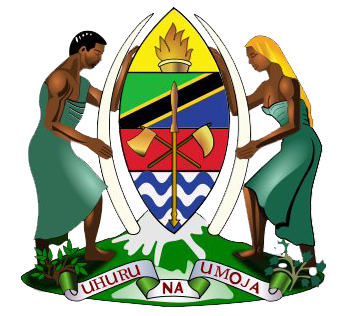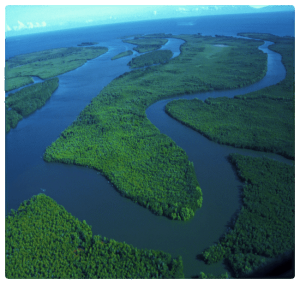Mangrove Forests
Mangrove forest of Rufiji
Tanzania is one of the countries with a largest contiguous area of mangrove forests in Africa, occurring at the land–sea interface of major river estuaries, island and deltas along the 1,424 km long coastline from the border with Kenya in the North to the border with Mozambique in the South. Mangrove forests are categorized as national reserves with strict protection and protected by the Forest Act 2002. Mangrove forests, spanning around 158,000 hectares of the coastal line and the Rufiji delta, which holds the highest density of mangroves in Tanzania about 62,000 ha. Mangrove trees flourish in marshy environments where their roots are submerged in saline water. Mangroves are characterized as evergreen or mostly evergreen with a capability of growing to heights above 30 m and are subsequently able to attain high values of above ground biomass (AGB), had an estimation of 10.0 millions Mg C (i.e. 37.2 millions Mg CO2e) is stored in mangrove forests.
There are nine species of mangroves found in mainland Tanzania and the dominant mangrove species being Rhizophora mucronata, Ceriops tagal and Avicennia marina. These have the ability to dominate the structure of the stand, being specialized to their environment, possessing a mechanism of salt exclusion/tolerance and having sufficient taxonomic independence and diversity from terrestrial counterparts.



